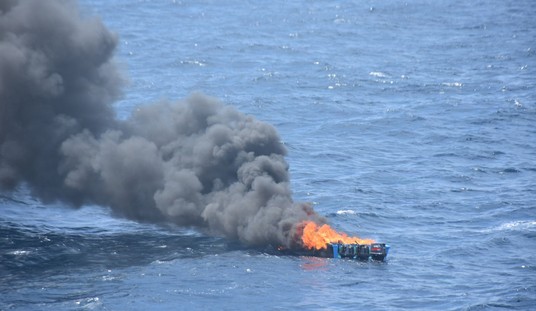This week, several news stories converged on an odd topic: hydraulic fracturing.
Hydraulic fracturing, or “fracking”, has been used since the 1950s to stimulate oil and gas wells. The process involves pumping a sand-laden slurry into a well and subjecting it to enough pressure that the rocks in the productive formation fracture, or break. The purpose of the sand is to prop open the fracture, so it stays in place. The carrying fluid can then flow back out of the well, along with oil and gas if it’s been a successful frac.
Item: In 2009, the U.S. surpassed Russia as the world’s leading gas producer, largely driven by industry’s successful shale developments in Texas, Louisiana, Pennsylvania and other states.
The US, with its big gas shale resources, has surpassed Russia as the world’s leading gas producer. The US government’s Energy Information Administration (EIA) said US gas production for the year probably rose 3.7% to 624 billion cubic meters, its highest level of the decade. Russia’s output fell 12% to 582 billion cubic meters last year, the Russian energy ministry said this week.
And what technology makes the shale developments possible? Hydraulic fracturing.
Item: House Panel Looks Into Effects of Exxon-XTO Merger
The proposed all-stock deal valued at $41 billion between Exxon Mobil and XTO Energy Inc. has been seen by many in the oil and gas industry as a show of confidence for the future of unconventional reserves such as those from shales, tight sands and coal seams. Exxon Mobil has said it wants to use the merger as an opportunity to set up a new business unit to develop and deploy technologies to extract fuels from unconventional plays.
The proposed purchase would boost Exxon Mobil’s acreage in unconventional natural gas reservoirs to 8 million acres — the largest portfolio in the industry, according to the company. The reservoirs include significant acreage in the Barnett, Marcellus and Haynesville shales, among others.
On Wednesday, XTO founder and chairman Bob R. Simpson told the House Subcommittee on Energy and the Environment that “… virtually every well drilled by his company uses hydraulic fracturing. [XOM Chairman Rex] Tillerson added there have been more than a million wells drilled using hydraulic fracturing in the United States, and not one has been documented as contaminating ground water. Furthermore, he said, ‘Without hydraulic fracturing, the gas locked in the shale rock stays locked.’ ” (Source.)
So what technology does Subcommittee Chair Rep. Ed Markey (D-MA) now want the EPA to regulate under the Safe Drinking Water Act? That’s right, boys and girls.
Hydraulic fracturing.
Specifically, the fracturing fluid. Frac fluid does contain some nasty-sounding additives, stuff that I’d rather not have in my drinking water.
The Environmental Working Group just hates fracking. The EWG Facebook page links to a page at their website with the ironically appropriate title “Fractured Logic: The Peril in ‘Fracking’ Chemicals”.
“EWG Senior Counsel Dusty Horwitt has spent six months looking into the issue.” His findings can be summarized as follows: Chemicals! Toxic stew! Petroleum distillates! Contaminated drinking water! Benzene! Diesel! More benzene! Cancer!
Read it yourself, and note the lack of specific scientific or technical details. Note also that Mr. Horwitt is a lawyer. Why not get the opinion of a geologist or engineer? Mr. Horwitt speaks the language of the trial lawyer, playing on the emotion and ungrounded fears of the general population.
So, how valid are EWG’s claims? From a New York Times “Green Inc.” blog entry on the EWG study:
In 2004, the United States Environmental Protection Agency released a report declaring that hydraulic fracturing posed little threat to human health. The following year, drawing support from the E.P.A. report, Congress voted to exempt hydraulic fracturing from oversight under the Clean Water Act.
Then there’s Energy Secretary Stephen Chu:
Energy Secretary Steven Chu on Friday said a controversial natural gas drilling technique called hydraulic fracturing, which energy companies are increasingly using to access abundant U.S. shale gas reserves, can be performed safely.
In his remarks, Chu went on to acknowledge: “Can you do it incorrectly and start to pollute water tables? Yes.” Could I drive my car off a bridge? Could I use home power tools to make a hole in my skull? Yes, but why would I?
The whole purpose of fracking is to stimulate gas-bearing reservoirs. It is an expensive process. Wells are designed expressly to handle the pressures involved; shallow freshwater sands are typically protected by multiple strings, or layers, of concentric steel pipe called casing, and these in turn are sealed in place with sheaths of cement. Well designs are closely considered by the various state permitting bodies; one of their primary areas of concern is the protection of groundwater resources.
But the most important protection of groundwater is that it is separated from the gas-bearing formation, typically by many thousands of vertical feet, as much as two miles, or even more. Geomechanical forces tend to confine the fracture to the target geologic zone; this has been confirmed by ultrasensitive seismic montioring that can map the zones failure, in three dimensions, while the frac treatment is in progress.
Industry’s case is well presented at the website, Energy in Depth, sponsored by the Independent Petroleum Association of America. You’ll find there a regulatory timeline, IPAA’s Open Letter to Congress, and some interesting animations (sample below) which depict the process of drilling and completing a well. I invite you to visit the site, consider the issues and the facts, and make up your own mind.
[VIDEO REMOVED]
[Not my favorite graphic, in that I don’t understand the multiple lines emanating from the vertical line of the wellbore. It does, however, do a good job of depicting the depth of a typical gas well, in relation to the Empire State Building.]
Cross-posted at VladEnBlog.














Join the conversation as a VIP Member